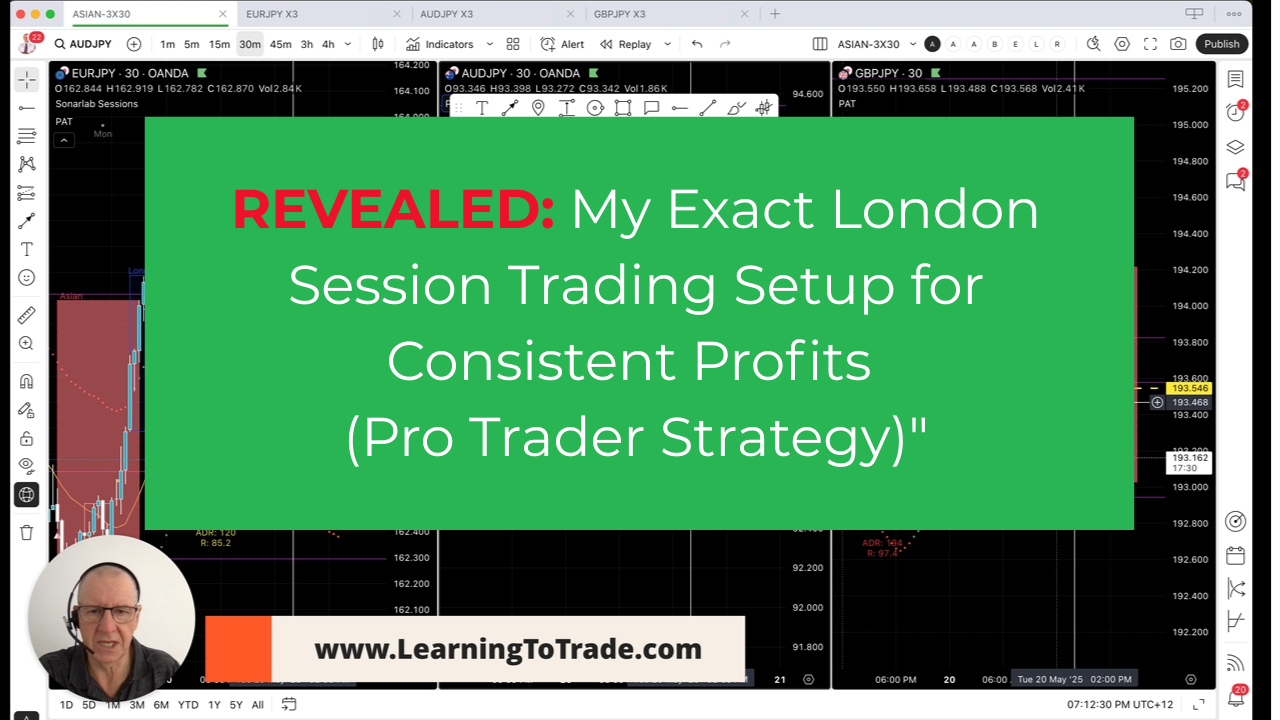Trading the London Session: Setting Up for Success
Learn how to trade the London session effectively. I'll show you my exact setup using multiple timeframes to spot breakouts from previous session ranges. Follow my systematic approach to identify profitable trading opportunities with greater consistency.

In today's video, I walk you through my approach to the London trading session, showing you exactly how I set up my charts and identify potential trading opportunities in real-time.
Understanding Trading Sessions
Many of you have asked about trading different timeframes based on your location. While I'm typically analyzing the Asian session from New Zealand, I'm currently in Spain, which aligns perfectly with the London session opening.
I'm using the Sonar Lab sessions indicator (free to install) which clearly marks each trading session on your charts. You might notice numbers displayed under each session - these simply indicate the price range the market traded within during that particular session.
Quick Tip: One of my students showed me that you can remove these session markings as needed by clicking on them - quite a useful feature!
My Chart Setup Process
I begin with a 30-minute chart and draw what I call "the ray" or dashed line using the horizontal ray tool from the toolbar. If you've gone through my training or use the pattern indicator, you'll know exactly where to place this line and how it works.
What we're looking for is decisive market movement above or below this reference line. I'm focusing specifically on Euro JPY today because, unlike the other pairs I'm monitoring, it has clearly broken away from its confined range.
Spotting the Opportunity
Looking at Euro JPY, I noticed that the market pushed through a previous resistance point and then pulled back. This retracement creates an area of interest where the market could likely go long from here.
To refine my analysis, I use multiple timeframes:
- The 30-minute chart gives me the bigger picture
- The 15-minute helps me narrow down potential entry points
- The 5-minute provides precision for actual entries
Trading Across Multiple Timeframes
When I switch between timeframes, I use the "sync drawings options" in global settings (just click on it once) to ensure whatever I mark on one chart shows up on others. This feature is incredibly useful when you've marked up your 30-minute chart and want to see those same reference points on smaller timeframes.
What I'm specifically watching for is how the market interacts with the extremities of the Asian session range. Will it break upward through resistance or drop below support? These breakout points create our potential trading opportunities.
My Entry Strategy
Before committing to an entry, I want to see:
- A clear break from the confined range of the previous session
- Ideally, a "pressure point" or market maker activity near support
- The market is starting to move in our anticipated direction
- A small retracement on the 5-minute chart, providing a more favourable entry price
The key is ensuring our entry is clear of the accumulation area - in other words, we want confirmation that price has truly broken out of its confined range before committing.
Conclusion
By following this systematic approach to the London session, you should be able to identify profitable trading opportunities with greater consistency. The method combines multiple timeframe analysis with clear breakout confirmation, keeping you on the right side of market momentum.
Watch how this setup plays out through the London session, and I'm confident you'll be able to apply these principles to capture profitable trades.
I'll catch up with you very soon in the next video. Take care!